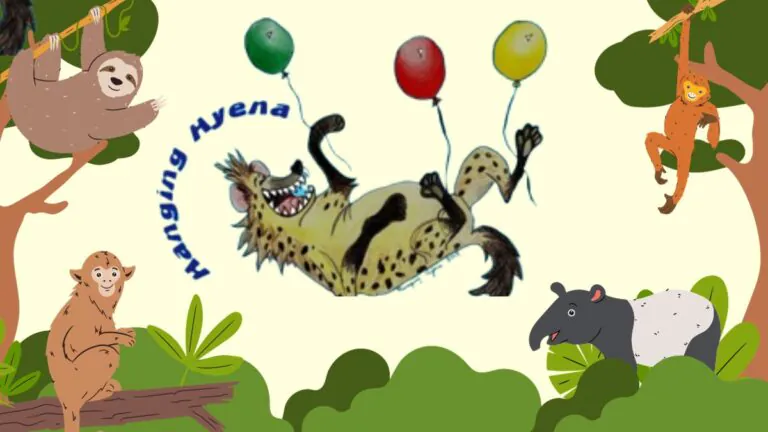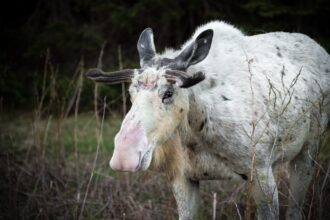Introduction to Hanging Hyena
Welcome to the captivating world of hanging hyena! These remarkable creatures are not your typical scavengers. With their unique adaptations and acrobatic abilities, hanginghyenas take nature’s stage by storm. Imagine a creature that defies gravity while hunting or resting high in trees—this is just a glimpse into the life of these fascinating animals.
Often misunderstood, hanging hyena bring an extraordinary twist to the ecosystem they inhabit. Their playful antics and impressive physical traits quickly capture our attention, inviting us to explore more about their existence. Join me as we delve deeper into the intriguing lives of these natural acrobats, discovering what makes them truly special in the animal kingdom.
Physical Characteristics and Behavior of Hanging Hyena
Hanging hyena, often mistaken for traditional hyenas, possess distinct physical traits. Their long limbs and flexible bodies enable them to navigate their arboreal habitats with ease. Clawed feet assist in gripping branches, a feature that sets them apart from other carnivores.
Behaviorally, these creatures are captivating acrobats of the animal kingdom. They are exceptional climbers and spend a considerable amount of time suspended upside down on tree branches. This unique position helps them survey their surroundings for potential threats or prey.
Socially complex, hanginghyenas communicate using various vocalizations and body language. Their playful nature often leads to intricate displays of agility during interactions with one another. Whether chasing each other through treetops or engaging in mock battles, their energy is infectious.
These behaviors not only showcase their adaptability but also highlight the importance of play in developing social bonds within the group dynamic.
Habitat and Distribution of Hanging Hyena
Hanging hyena, a lesser-known marvel of the animal kingdom, thrive in diverse environments. They typically inhabit tropical and subtropical forests where dense canopies provide ample opportunities for their unique lifestyle.
These remarkable creatures are primarily found across regions of Africa and parts of Asia. Their preference for areas rich in vegetation allows them to showcase their impressive climbing abilities.
The hanginghyena’s choice of habitat is crucial for its survival. The trees not only offer shelter but also serve as vantage points to spot prey or potential threats.
With competition from other predators, these animals have adapted well to their surroundings, making strategic use of both arboreal and terrestrial terrains. This versatility aids them in navigating through their ecosystem efficiently while evading dangers lurking on the ground below.
Unique Adaptations of Hanging Hyena
Hanging hyena possess remarkable adaptations that set them apart in the animal kingdom. Their elongated limbs and flexible spines allow for incredible agility when navigating trees. These features enable them to hang upside down effortlessly, showcasing their acrobatic prowess.
Their keen eyesight is another fascinating adaptation. This heightened sense allows them to spot potential prey or threats from great distances, even in low light conditions.
Moreover, hanginghyenas have specialized claws that provide a strong grip on branches and surfaces while they maneuver through their arboreal habitats. This trait not only aids in climbing but also enhances their ability to escape predators quickly.
Additionally, these unique creatures communicate using various vocalizations and body language specific to their environment. Such social interactions play a crucial role in maintaining group dynamics within their species.
Threats to the Survival of Hanging Hyena
Hanging hyena face several daunting threats in their natural habitat. Habitat loss is a significant concern, primarily due to deforestation and urban expansion. As trees are cut down for agriculture or development, these remarkable creatures lose essential nesting sites.
Climate change also poses challenges. Altered weather patterns can disrupt food availability and impact the ecosystems where hanginghyenas thrive. Their unique dietary needs make them particularly vulnerable to shifts in prey populations.
Additionally, human-wildlife conflict often leads to persecution. Farmers sometimes view these animals as competitors for livestock, resulting in retaliatory killings.
Poaching remains an ongoing threat too. The illegal wildlife trade targets many species within their range, further endangering hanging hyena and disrupting local biodiversity.
These factors create a precarious situation for this fascinating creature that deserves our attention and protection.
Conservation Efforts for Hanging Hyena
Conservation efforts for hanginghyenas are critical as their populations face numerous challenges. Organizations around the world are stepping up to protect these unique creatures and their habitats.
Habitat preservation is a primary focus. Protecting forests and grasslands where hanging hyena thrive ensures they have ample space to roam, hunt, and socialize. Awareness campaigns educate local communities about the importance of these animals in maintaining ecological balance.
Research initiatives aim to gather crucial data on hanginghyena behavior, migration patterns, and breeding habits. This knowledge helps formulate effective conservation strategies tailored to their needs.
Collaboration with local governments plays a significant role too. Enforcing anti-poaching laws directly benefits hanging hyena numbers while also safeguarding other wildlife species in shared ecosystems.
Community engagement fosters coexistence by promoting eco-tourism opportunities that highlight the significance of preserving such fascinating creatures for future generations.
Conclusion: Why Hanging Hyena are Truly Fascinating Creatures
Hanging hyena captivate our imagination with their extraordinary adaptations. These creatures, often misunderstood, play a crucial role in maintaining ecological balance. Their unique behaviors and social structures reveal a complexity that challenges conventional views of wildlife.
Moreover, their acrobatic skills showcase nature’s ingenuity. The combination of agility and strength allows them to thrive in diverse environments. Observing these animals can shift perspectives on what it means to be a predator or scavenger.
Their survival is not just about instinct; it speaks volumes about resilience in the face of environmental changes. As we learn more about hanginghyenas, we uncover secrets of evolution and adaptation that inspire awe.
Preserving such remarkable species enriches our understanding of biodiversity. Every encounter with a hanging hyena reminds us how interconnected life truly is and emphasizes the importance of conservation efforts for future generations.
FAQs
Hanging Hyena FAQs
Q:1 What exactly is a hanging hyena?
A: The term “hanging hyena” typically refers to a unique behavioral trait observed in certain species of hyenas. While not an official classification, it highlights their incredible agility and strength, allowing them to navigate rocky terrains or tree branches with ease.
Q:2 Are hanging hyena dangerous to humans?
A: Generally, hanging hyenas are not considered a threat to humans. They tend to avoid interaction and prefer staying within their natural habitats. However, it’s always important to respect wildlife from a distance.
Q:3 Where can I see hanging hyena in the wild?
A: These fascinating creatures inhabit various regions across Africa, notably savannas and grasslands where they can find ample prey. National parks like Serengeti or Kruger provide opportunities for observing them in their natural environment.
Q:4 Do all types of hyenas exhibit this behavior?
A: Not all species display the same level of acrobatic skill as those often referred to as “hanging.” Spotted and striped hyenas might show some similar behaviors but vary greatly in ability compared to lesser-known species.
Q:5 How do conservation efforts help hanging hyena?
A: Conservation programs aim at habitat preservation and reducing human-wildlife conflict. By protecting these environments, we ensure that future generations will witness the remarkable traits of these animals without threats looming over their survival.
Q:6 Can I adopt or support any specific projects for hanging hyena?
A: Many wildlife organizations focus on supporting endangered species through funding and awareness campaigns. You can donate or volunteer with such groups that prioritize habitat protection initiatives for all types of wildlife including our fascinating friends—the hanging hyena!
















